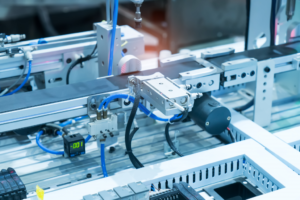UNDERSTANDING PNEUMATIC SYSTEMS: COMPONENTS AND OPERATION
Understanding Pneumatic Systems: Components and Operation
Pneumatic systems are essential in various industries, from manufacturing to automotive, where they power a wide range of machines and equipment. These systems rely on compressed air to perform mechanical work, making them versatile and cost-effective. In this article, we will explore the key components of pneumatic systems and how they operate.
Components of a Pneumatic System
1. Compressor
The heart of any pneumatic system is the compressor. Compressors are responsible for taking in ambient air and pressurizing it. They come in various types, including reciprocating, rotary screw, and centrifugal, each suitable for different applications. Compressors ensure a constant supply of compressed air to the system.
2. Air Storage
Compressed air storage tanks, also known as receivers, store the compressed air generated by the compressor. These tanks help maintain a stable supply of air, ensuring that the system can meet varying demands. They also act as moisture separators, preventing water from entering the pneumatic system, which can cause damage and reduce efficiency.
3. Filters
Filters are used to purify the compressed air by removing impurities such as dust, oil, and moisture. Clean air is essential to prevent damage to pneumatic components and maintain system performance. Common types of filters include particulate filters, coalescing filters, and adsorption filters.
4. Regulators
Pneumatic regulators control the pressure of the compressed air within the system. By adjusting the regulator settings, operators can ensure that the air pressure remains within the required range for a specific application. This helps protect components from overpressure and enables precise control of pneumatic devices.
5. Control Valves
Control valves are responsible for directing the flow of compressed air to various pneumatic actuators and devices. They come in various types, including ball valves, butterfly valves, and solenoid valves, each serving different purposes. Control valves can start, stop, and modulate the flow of air to control the movement and operation of machinery.
6. Actuators
Pneumatic actuators are the components that convert compressed air energy into mechanical motion. Common types of actuators include pneumatic cylinders and rotary actuators. They are used to perform tasks such as lifting, pushing, pulling, rotating, and more. Actuators are crucial for the automation of various processes.
7. Tubing and Fittings
Tubing and fittings form the interconnected network that delivers compressed air from the source to the actuators and devices. It’s essential to use the right size and material for tubing and fittings to minimize pressure drop and ensure efficient air distribution throughout the system.
Operation of Pneumatic Systems
Understanding how pneumatic systems operate is key to their successful implementation. Here are the fundamental steps in the operation of a pneumatic system:
1. Compression
The process begins with the compressor, which takes in ambient air and compresses it to a specified pressure level. This compressed air is then sent to the storage tank for immediate or future use.
2. Filtration
Before the compressed air enters the pneumatic system, it passes through filters to remove contaminants and ensure clean, dry air. Clean air is vital to prevent damage to components and maintain system efficiency.
3. Regulation
The pressure of the compressed air is controlled using regulators. Operators set the desired pressure level based on the requirements of the pneumatic devices and actuators in use.
4. Direction and Control
Control valves direct the flow of compressed air to the desired actuators and devices. These valves can be manually operated or controlled electronically, depending on the level of automation required.
5. Actuation
Pneumatic actuators, such as cylinders, receive the compressed air and convert it into mechanical motion. These actuators perform the intended work, such as lifting, pushing, or rotating, as dictated by the control system.
6. Exhaust
After the actuators have completed their tasks, the exhaust phase allows the release of compressed air from the system, ensuring that pressure is maintained within the desired range.
Understanding the components and operation of pneumatic systems is essential for efficient and reliable performance in various industries. By carefully selecting and maintaining these components and following proper operational procedures, businesses can harness the power of compressed air to automate processes and improve productivity.


